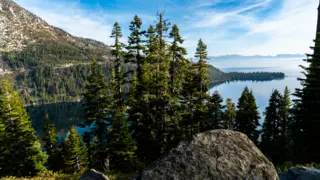
Earth Day is an annual celebration that raises awareness of the need to protect Earth's natural resources for future generations. But just how did Earth Day come to be and what are some simple steps you can take to help the environment? Hint: Recycling is one.
Introduction to Earth Day
The day’s origin traces back to U.S. events in the 1960s when there was a dramatic uptick in environmental concerns. With several environmental catastrophes, particularly the Santa Barbara oil spill and the Cuyahoga River fires of 1969, many Americans felt it was time we took a more active approach in the stewardship of our planet. Gaylord Nelson was one of these people.

The First Earth Day: April 22, 1970
Inspired by these environmental disasters, the junior senator from Wisconsin established the first Earth Day on April 22, 1970, to bring light to the issue of environmental responsibility and transforming the public’s attitude.
Gaylord organized a “teach-in” on college campuses along with congressman Pete McCloskey and activist Denis Hayes. The group chose April 22, a weekday falling between Spring Break and Final Exams, to maximize the greatest student participation.

Of that first Earth Day, Nelson wrote in an article for the April 1980 issue of the EPA Journal, “It was on that day that Americans made it clear that they understood and were deeply concerned over the deterioration of our environment and the mindless dissipation of our resources.”
Key Environmental Legislation
Earth Day was the push the nation needed and not long after, Congress passed major initiatives that would become the foundation of the nation’s environmental laws, including the National Environmental Education Act, the Occupational Safety and Health Act, the Clean Air Act, the Clean Water Act and the Endangered Species Act.
Global Expansion of Earth Day
Beginning in 1990, Earth Day went global and, according to its official organization, EarthDay.org, the day mobilized more than 200 million people in 141 countries to bring the fight for the environment to the global stage. In 1992 the United Nations hosted an Earth Summit in Rio de Janeiro and in 1995 Nelson would receive the Presidential Medal of Freedom for his role as the founder of Earth Day.
Earth Day continues to grow and celebrated its 50th anniversary in 2020 with more 100 million people taking an action.
How You Can Help the Environment
Become a papertarian
Papertarians choose and use paper products and packaging because they know it is a smart choice for the environment. The paper and packaging industry is taking strides to support a healthy future for our planet through sustainable practices and making products from renewable resources and not fossil fuels. Learn more about becoming a papertarian.
Recycle
Paper, paper packaging and cardboard boxes are widely accepted for recycling across the country. Find out what can and can’t be recycled and download our guide below. But always check your local guidelines to see what specific items are accepted as guidelines do change.
Join millions in making a difference
Find local Earth Day events, volunteer opportunities and eco-friendly tips here!












